Introduction to Croatia
Croatia is a small beautiful country in Eastern Europe, located on the Balkan Peninsula. It’s famed for its outstanding natural beauty and has become an extremely popular summer vacation destination, particularly for Europeans. In fact, Croatia is the world’s 23rd most visited country in the world.
Croatia is a member of the EU. However, it uses its own currency, called Kuna, instead of the Euro. Croatia is also a member of NATO, UN, UN Peace-Keeping Forces, WHO and the Council of Europe.
In many regards, Croatia is much more like 1st-world western European countries & cultures than its neighboring Balkan countries, such as Serbia, Bosnia, Montenegro and Albania. First off, Croatia has a very high standard of living, is considered a ‘high income country’ by World Bank, and is considerably more expensive than its neighbors.
Secondly, Croatia has a long, complex history of partnerships with European dynasties, particularly with Hungary and the Austro-Hungarian Hapsburg Empire, whereas many other Balkan countries have had more significant influence from 500 years of Ottoman Turk rule.
Croatia is a modern country with a well-developed universal healthcare system; an excellent educational system; comprehensive arts, theater & cultural programs; and freedom of religion and the press.
Most Croatians are Christian, particularly Catholic (over 85%), whereas most other Balkan countries are predominantly Orthodox Christian or Muslim.
As for Croatia’s famed outstanding natural beauty, the country has an extremely long coastline along the narrow Adriatic Sea. The coast has hundreds of small pebble beaches and more than 1000 islands & islets set just offshore. Most of the islands have a long narrow shape and look like rocky, forested mounds rising up from the sea.
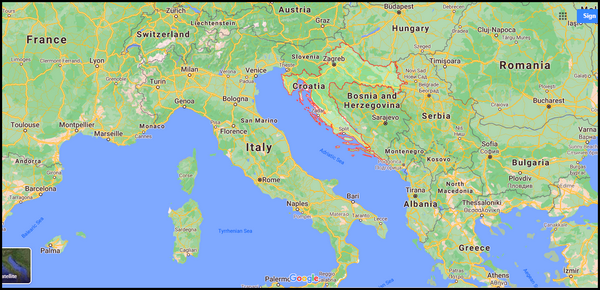 Location & Geography
Location & Geography
Croatia is the northernmost Balkan country on the Adriatic Sea. Its northeastern border almost touches Italy at the northern curve of the Adriatic. However, a small coastal strip of just 25 km/15 miles of Slovenia separate Croatia from Italy.
From that border, Italy curves down the western side of the Adriatic while Croatia slides down the eastern side of the sea. That means Italy and Croatia face each other across most of the length of the narrow Adriatic and, thus, legally share a maritime border.
Croatia also has borders with Slovenia in the north, Hungary in the northeast, Serbia to the east and Bosnia & Herzegovina to the south. At the very farthest southern tip of Croatia, the country shares a tiny 20 km / 12 mile-long border with Montenegro along the Adriatic. Montenegro continues southward along the Adriatic Sea, offering more spectacular coastal scenery.
While Croatia is most appreciated for its stunning coastline, beaches and islands, the country’s mountainous interior has equally spectacular scenery. The highest mountains reach 6000 ft /1800+ M and are snow-covered in winter above 4000 ft/1200 M.
Croatia has huge biodiversity, one of the most varied in Europe, with four major climate zones: Mediterranean, Continental, Alpine and Pannonian.
Croatia currently has 444 natural protected areas that cover about 9% of the country’s total land. They include eight national parks, a variety of other protected areas and 10 UNESCO World Heritage Sites, some of which are primarily natural sites while others are predominantly cultural.
Perhaps most striking and unique about Croatia’s natural world is that about 50% of the land is composed of porous limestone karst topography. More than 7000 caves have been found, some of them extremely deep.
The karst formations have also created two of Croatia’s most unique, outstanding lake/waterfall systems which feature amazing multi-tiered, inter-connected waterfalls & lakes that are out of this world. They’re found at Plitvicka National Park and Krka National Park.
Brief Modern History of Croatia
The modern Republic of Croatia was formed in 1991 when it declared its independence from the former communist country of Yugoslavia, which had been formed in 1945 as a result of WWII treaties. Soviet Yugoslavia was a very large country that also included the current countries of Montenegro, Macedonia, Kosovo. Serbia and Bosnia & Herzegovina.
Croatia was the center of the Yugoslavian Republic, so when it declared independence, the result was the dissolution of Yugoslavia. Regions that had been states within Yugoslavia each became independent countries, as noted above. There was some reshuffling, civil wars and bickering and re-forming of countries off and on for many years in the 1990s and early 2000s until they’ve finally settled into the current state of affairs.
Brief Ancient History of Croatia
While the modern Republic of Croatia dates back only to 1991, the original nation of Croatia was internationally recognized as an independent country way, way back in the year 879 A.D. by Croats who had migrated from elsewhere in the 600s. Croatia has existed in one form or another on this land ever since. That’s more than 2000 years!
Christianity was established among the Croats somewhere in the 700-900s, so that religion has long deep roots in Croatia.
In 925 Croatia became the Kingdom of Croatia with King Tomislav as the first ruler. The Kingdom lasted over 200 years, with its peak in the 1100s.
Since that time Croatia has unified itself over the centuries with Hungarians, Hapsburgs, Slovenians, Serbs and Bosnians, often forming new country names with its allies. During that time, the beautiful coastal region was invaded by various European powers, including the French and Venetians, as well as by the imposing Ottoman Turk Empire.
Prior to the arrival of Croats, the region was settled all the way back into pre-history. There’s archaeological evidence of Neanderthals, Neolithic peoples and Iron Age man living in the area. Later the Illyrians settled, followed by the Greeks, Romans and Byzantines. It was the Croats who overwhelmed the Romans and kicked them out, destroying most of their towns, cities and architecture.
I mention all this to point out the extremely long history of Croatia and the fact that there are now remnants of all these various cultures scattered around Croatia. That provides a very rich and diverse cultural presence around the country.
Main places to see and things to do & tourism in Croatia
As I mentioned earlier, Croatia is an extremely popular and famous tourist destination among Europeans, particularly for summer vacations at the many beaches, islands and marina towns. Croatia’s close proximity to Europe and its membership in the EU make Croatia quite easy for Europeans to visit. Tens of thousands drive to Croatia in their own vehicles, while others fly into the country’s several international airports.
Croatia is also famous among British vacationers, who can fly there in just a few hours from London.
In more recent years, Croatia has also gained huge popularity among other nationalities, especially Americans, because the TV show, Game of Thrones, was partly filmed in Dubrovnik.
Croatia’s most famous coastal cities, from north to south include Ravinj, Pula, Porec, Rijeka, Zadar, Split and Dubrovnik. The absolute center of coastal tourism is centered at Split and the off-shore island of Hvar, located about halfway down the coast.
The most famous islands are mostly situated near Split and include Hvar, Brac, Vis and others.
Croatia’s capital city, Zagreb, is located inland near the northern border with Slovenia. It’s a stunning city filled with gorgeous historic architecture from various eras of European history, dozens of small theaters & art galleries, as well as several important world-class museums.
The country’s exquisite national parks, particularly those with waterfalls and lakes, are also huge tourist attractions.
Quite unfortunately for budget travelers, Croatia is quite expensive. Unlike all other Balkan countries, which are pretty cheap to visit, Croatia’s prices are nearly as high as western European countries.
Accommodation is particularly expensive. Even dorms in hostels in most destinations cost 15-20 Euro or more. (Compared to 6-8 Euro for a dorm bed in most other neighboring countries). Private rooms cost a minimum of 20 Euro in most places during most times of the year.
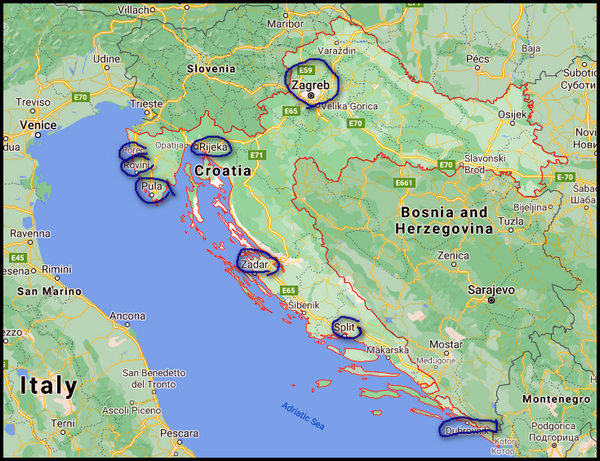 My Travel Plans to Croatia
My Travel Plans to Croatia
Despite Croatia’s high costs I am planning to spend nearly two months there exploring most of the major destinations. The main reason for this decision is that I have a large assignment to review 35 luxury hotels and update three travel guides to Croatia. That’s actually the reason I’ll be staying so long and visiting so many destinations.
If it weren’t for the assignment, I would probably have to breeze through Croatia pretty quickly, say two-three weeks, and just visit two or three key places. Luckily for me, I’ll earn enough from the assignment to cover my costs for two months.
Despite that, I admit that the prices in Croatia, particularly for accommodation, make me a bit nervous since I do have a low budget.
I’m hoping I can keep my food costs down by buying groceries and cooking. I will also have to be extremely careful about spending money on other things like museums, transportation and those gorgeous national parks.
I may end up missing a few things since I’ll have to pick and choose. But, hey, I will get to see a good chunk of Croatia’s most gorgeous places and to stay considerably longer than I would have without the hotel work.
Needless to say, with all that stunning scenery and historic architecture, I will have a fabulous time exploring Croatia. I’ll be sharing plenty of photos, destination information and travel tips as I explore the country, so stay tuned!
=================
You might also like:
Differences Between American and European Cities
13 Things I Love about Eastern Europe
=================================






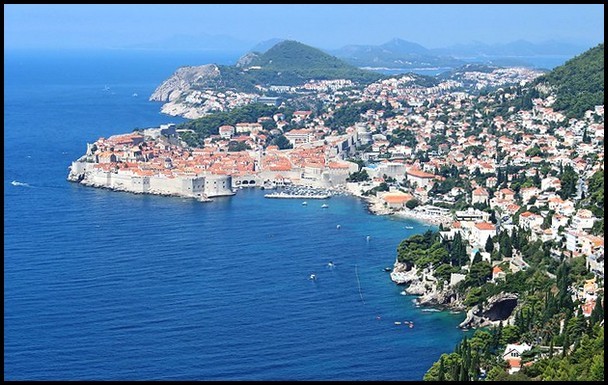
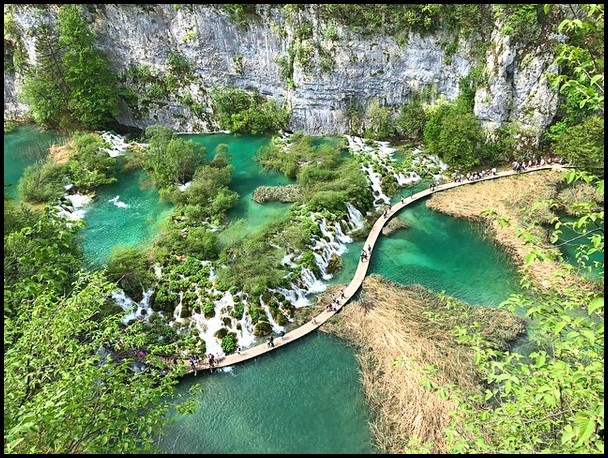
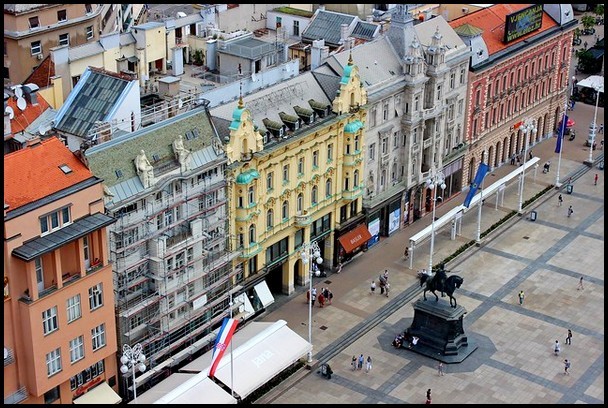
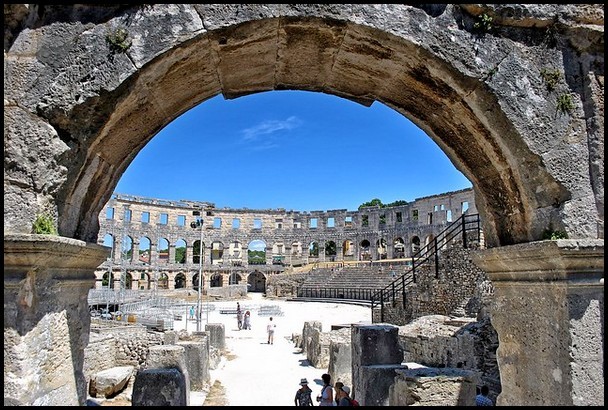





 Hi! I'm Lash, an American nomadic world traveler who's been traveling solo since 1998. I’m passionate about traveling the world nomadically and then sharing it all with you. I hope to inspire you to travel the world, to entertain you with tales from the road, and to help you reach your travel dreams. Welcome!
Hi! I'm Lash, an American nomadic world traveler who's been traveling solo since 1998. I’m passionate about traveling the world nomadically and then sharing it all with you. I hope to inspire you to travel the world, to entertain you with tales from the road, and to help you reach your travel dreams. Welcome! 




7 pings
Skip to comment form ↓
15 Interesting Facts about Croatia
2020/09/20 at 9:30 pm (UTC 8) Link to this comment
[…] « Introduction to Croatia […]
All About Hvar Island - Croatia
2020/11/18 at 2:17 am (UTC 8) Link to this comment
[…] Introduction to Croatia […]
Introduction to Bosnia
2020/12/22 at 10:42 pm (UTC 8) Link to this comment
[…] Introduction to Croatia […]
LashWorldTour 2021 World Travel Plans - LashWorldTour
2021/01/17 at 6:09 pm (UTC 8) Link to this comment
[…] Introduction to Croatia […]
How to Choose an International Travel Destination during Covid-19 World - LashWorldTour
2021/03/06 at 10:48 pm (UTC 8) Link to this comment
[…] Introduction to Croatia […]
Introduction to the country of Georgia - LashWorldTour
2021/08/04 at 12:02 am (UTC 8) Link to this comment
[…] Introduction to Croatia […]
Surprising Facts about the country of Georgia - LashWorldTour
2021/09/02 at 1:29 am (UTC 8) Link to this comment
[…] Introduction to Croatia========================= […]